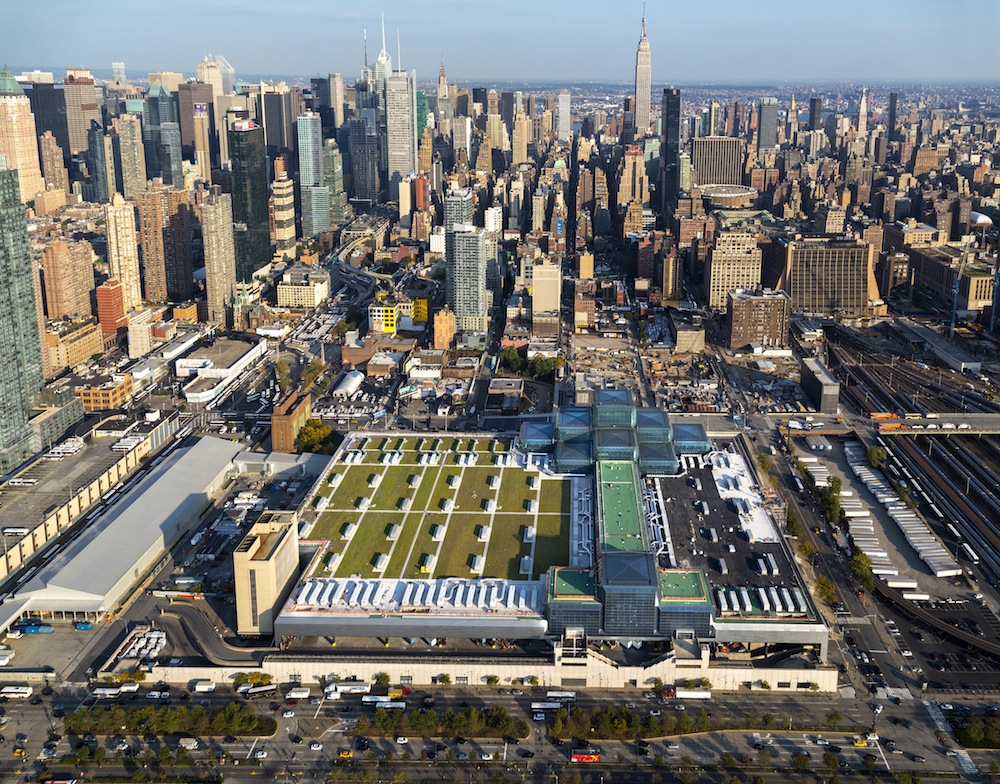Tishman Construction, an AECOM company, joined the New York Convention Center Operating Corporation, Empire State Development, the New York Convention Center Development Corporation, the Hotel Association of New York City, and FXFOWLE EPSTEIN to celebrate the completion of the Jacob K. Javits Convention Center’s comprehensive revitalization and expansion. This $465-million project has secured the Javits Center’s position as the busiest convention center in the United States.
Since the project’s beginning in 2009, Tishman has managed its construction while keeping the facility open, operational and safe for exhibitors and guests. The massive upgrade included a 110,000-sf expansion – Javits North – as well as the installation of 240,000 sf of energy-efficient glass curtain wall on the existing facility. Additionally, Javits now has the largest green roof in the Northeast spanning 292,000 sf, which will provide significant energy and cost savings. With a commitment to sustainability and a focus on efficiency, the repositioned building is pursuing LEED Silver certification.
Led by Tishman Construction Executive Vice President Vincent Piscopo with Senior Vice President Glen Johnson and First Vice President Nancy Czesak, the project team and show managers worked together so that Javits remained fully-functional throughout its renovation. Building Information Modeling (BIM) tools were utilized to facilitate the planning and implementation of a phased schedule and coordinate extensive logistics that ensured public safety and kept the project on track.
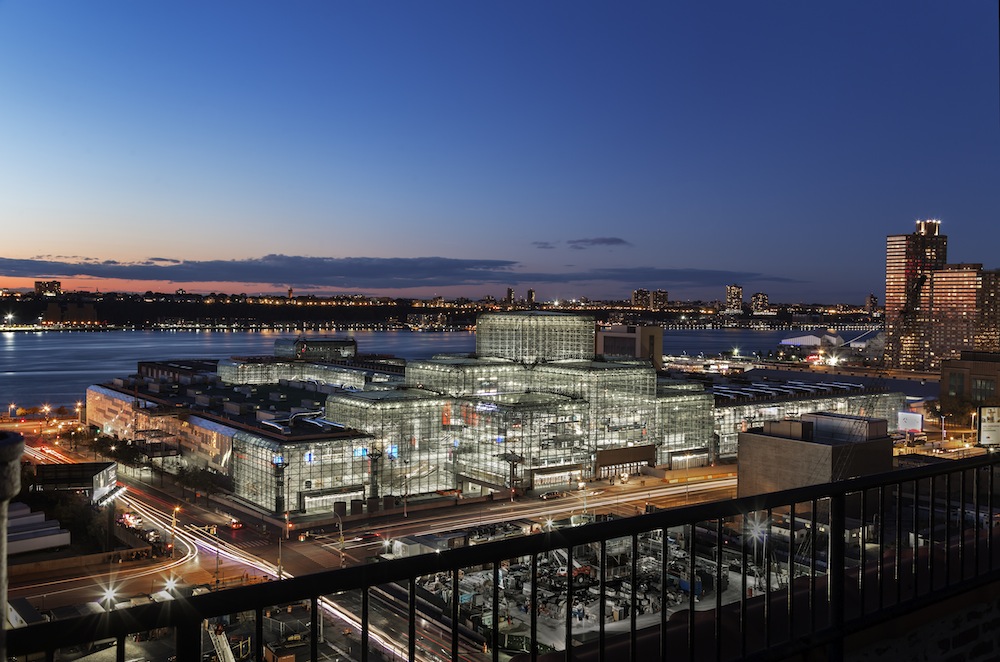
Image by David Sundberg - Esto
In order to replace the renowned glass roof and façade of the facility’s Crystal Palace and River Pavilion, the Tishman team erected temporary scaffolding filling 5 million cubic feet of space. On the building’s roof, 19,000 linear feet of track were laid for an innovative rail gantry system that moved and installed 89 HVAC units weighing 20,000 pounds each. Through collaboration with the New York City Department of Buildings’ BEST Squad, these successful methods are now used as a model for working safely at public facilities.
“The most impressive aspect of this project was realizing the upgraded design without missing a single day of operations, a single event and any loss of revenue,” said Barbara Lampen, president of the New York Convention Center Development Corporation. “The fact that this could be achieved in that manner is a testament to the innovative and diligent planning that Tishman undertook in addressing the unique challenges that were part of this incredible renovation.”
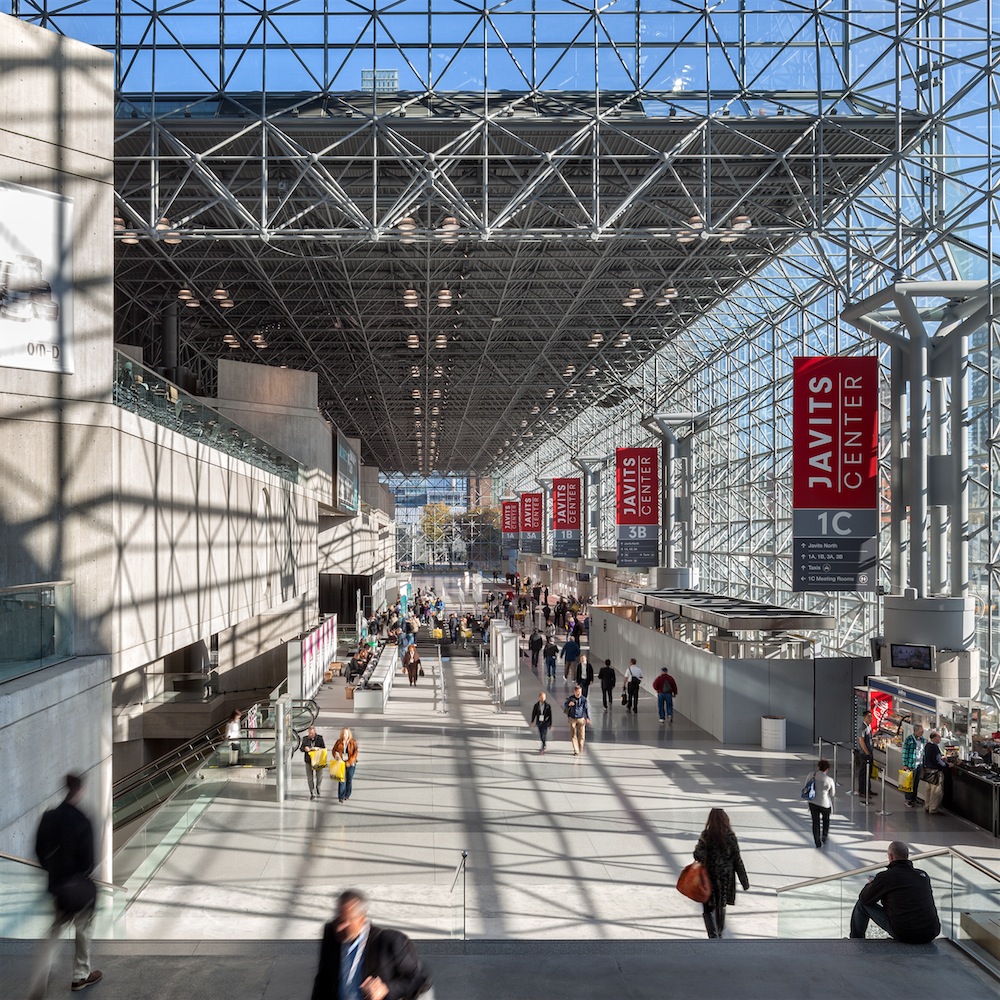
Image by Chris Cooper Photographer
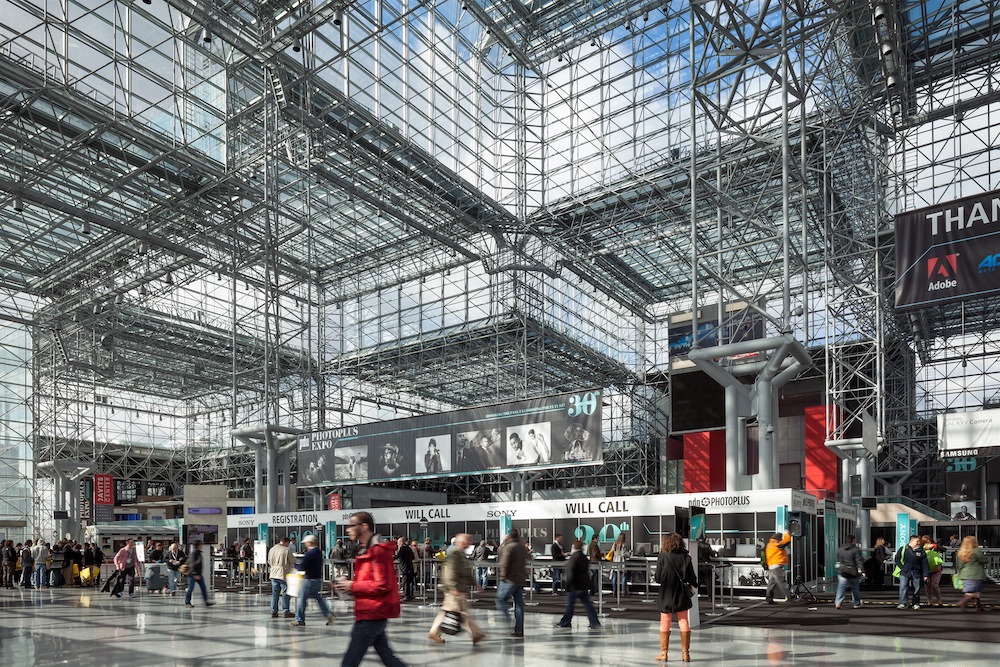
Image by Chris Cooper Photographer
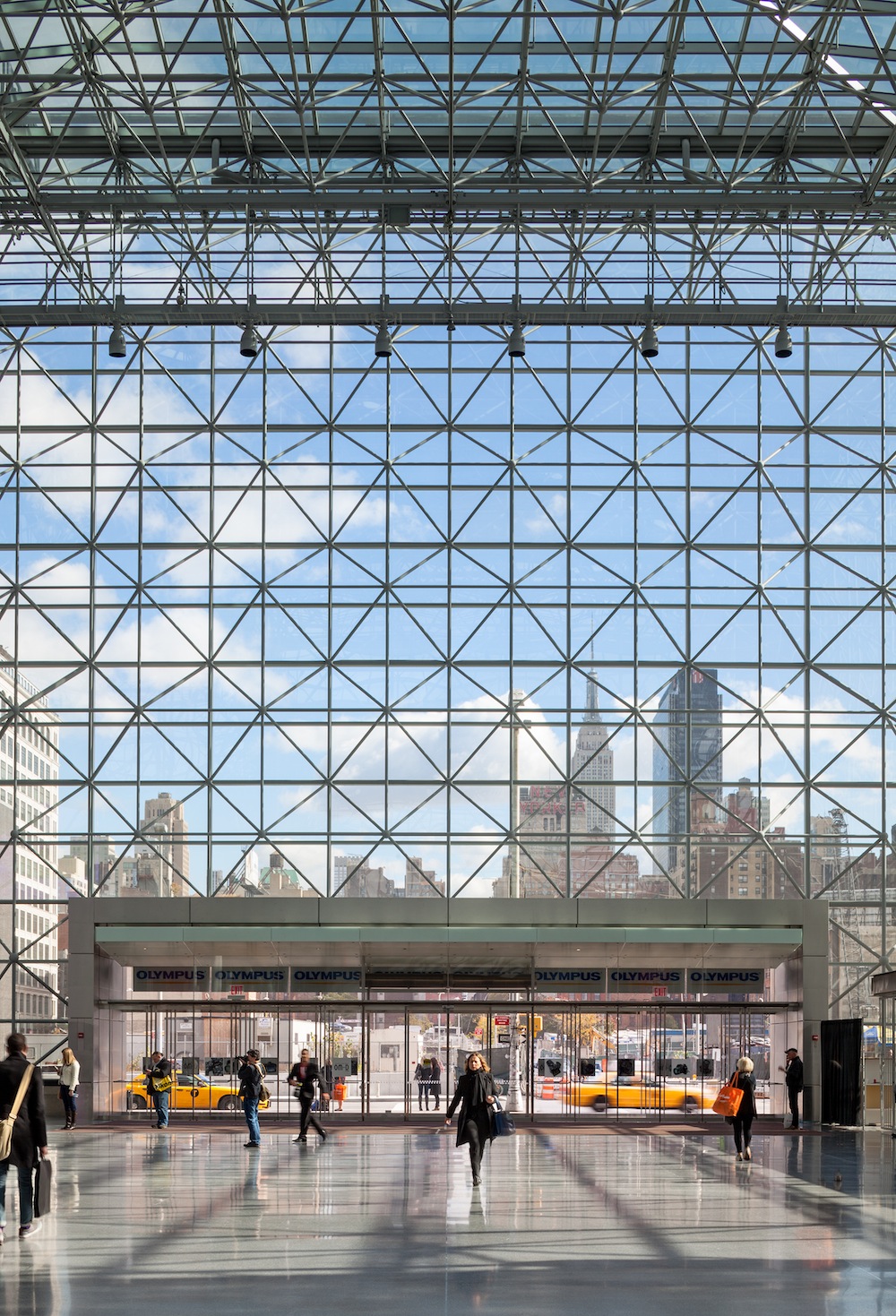
Image by Chris Cooper Photographer
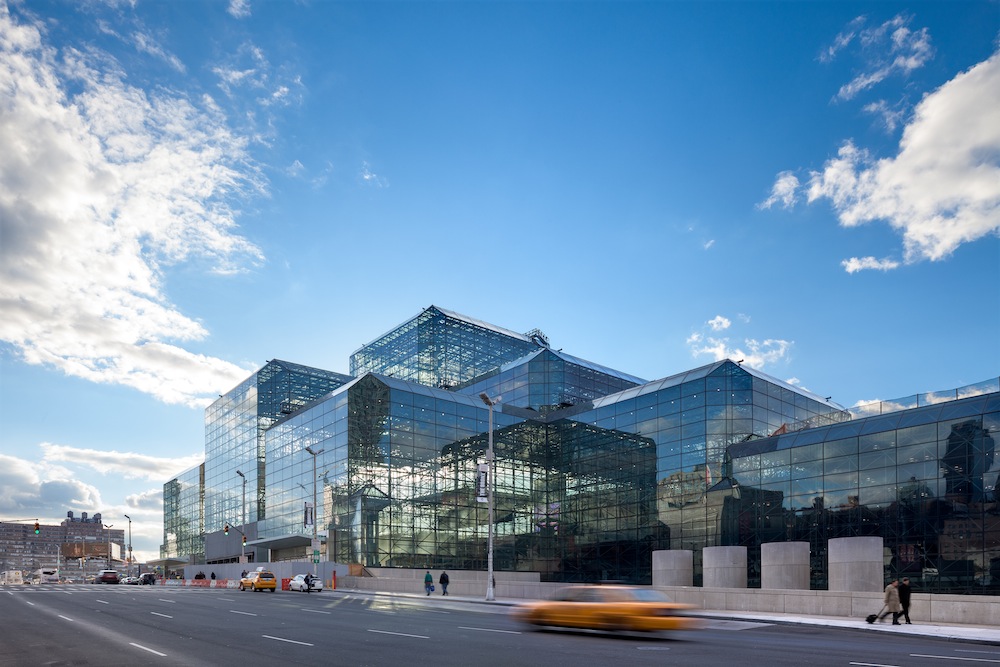
Image by Chris Cooper Photographer

Image by David Sundberg - Esto
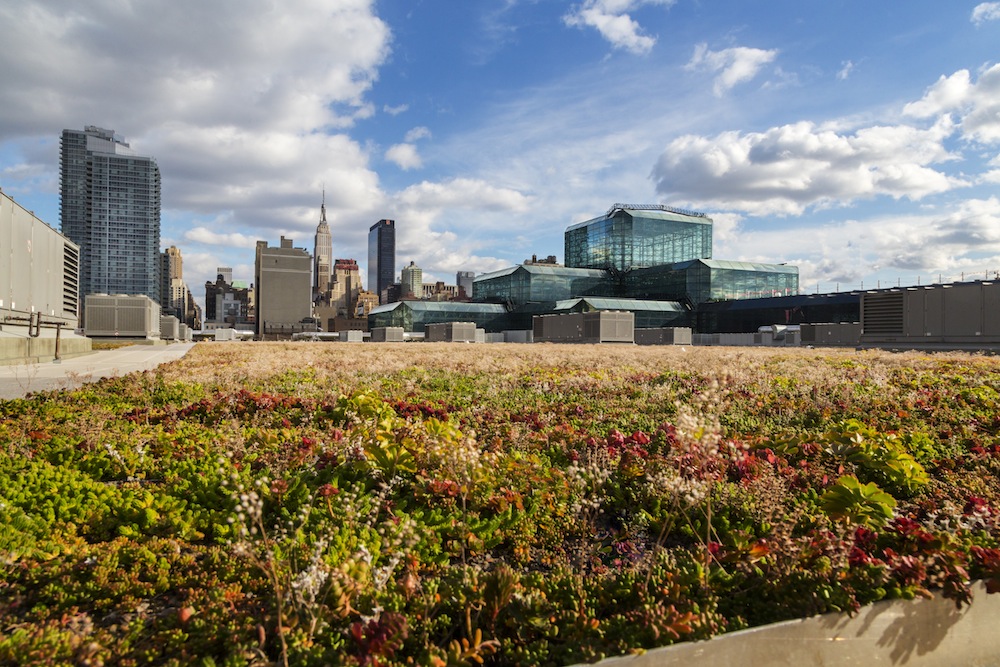
Image by David Sundberg - Esto
About Tishman Construction
Founded in 1898, Tishman Construction, a wholly owned AECOM subsidiary, is one of the world’s leading builders, currently managing construction for the 1,776-foot-high One World Trade Center, the Javits Convention Center expansion and renovation in New York, the new headquarters for the U.S. Department of Homeland Security in Washington, D.C., and the new Anaheim Regional Transportation Intermodal Center for high-speed trains in California. Known for successfully managing complex, iconic projects, Tishman is responsible for the construction of more than 450 million square feet of space, incorporating facilities of every size and type, including arts and culture, commercial, convention centers, education, gaming, government, healthcare, hospitality, residential, retail, sports and leisure, technology and transportation. More information on Tishman Construction can be found at www.tishmanconstruction.com. Follow Tishman on Twitter at @TishmanBuilds and like Tishman Construction on Facebook.
About AECOM
AECOM is a global provider of professional technical and management support services to a broad range of markets, including transportation, facilities, environmental, energy, water and government. With approximately 45,000 employees around the world, AECOM is a leader in all of the key markets that it serves. AECOM provides a blend of global reach, local knowledge, innovation and technical excellence in delivering solutions that create, enhance and sustain the world's built, natural and social environments. A Fortune 500 company, AECOM serves clients in more than 140 countries and had revenue of $8.2 billion during the 12 months ended Sept. 30, 2013. More information on AECOM and its services can be found at www.aecom.com.
Related Stories
| Nov 11, 2010
Saint-Gobain to make $80 million investment in SAGE Electrochromics
Saint-Gobain, one of the world’s largest glass and construction material manufacturers, is making a strategic equity investment in SAGE Electrochromics to make electronically tintable “dynamic glass” an affordable, mass-market product, ushering in a new era of energy-saving buildings.
| Nov 11, 2010
USGBC certifies more than 1 billion square feet of commercial space
This month, the total footprint of commercial projects certified under the U.S. Green Building Council’s LEED Green Building Rating System surpassed one billion square feet. Another six billion square feet of projects are registered and currently working toward LEED certification around the world. Since 2000, more than 36,000 commercial projects and 38,000 single-family homes have participated in LEED.
| Nov 10, 2010
$700 million plan to restore the National Mall
The National Mall—known as America’s front yard—is being targeted for a massive rehab and restoration that could cost as much as $700 million (it’s estimated that the Mall has $400 million in deferred maintenance alone). A few of the proposed projects: refurbishing the Grant Memorial, replacing the Capitol Reflecting Pool with a smaller pool or fountain, reconstructing the Constitution Gardens lake and constructing a multipurpose visitor center, and replacing the Sylvan Theater near the Washington Monument with a new multipurpose facility.
| Nov 9, 2010
Just how green is that college campus?
The College Sustainability Report Card 2011 evaluated colleges and universities in the U.S. and Canada with the 300 largest endowments—plus 22 others that asked to be included in the GreenReportCard.org study—on nine categories, including climate change, energy use, green building, and investment priorities. More than half (56%) earned a B or better, but 6% got a D. Can you guess which is the greenest of these: UC San Diego, Dickinson College, University of Calgary, and Dartmouth? Hint: The Red Devil has turned green.
| Nov 9, 2010
12 incredible objects being made with 3D printers today
BD+C has reported on how 3D printers are attracting the attention of AEC firms. Now you can see how other creative types are utilizing this fascinating printing technology. Among the printed items: King Tut’s remains, designer shoes, and the world’s smallest Rubik’s Cube.
| Nov 9, 2010
U.S. Army steps up requirements for greening building
Cool roofs, solar water heating, and advanced metering are among energy-efficiency elements that will have to be used in new permanent Army buildings in the U.S. and abroad starting in FY 2013. Designs for new construction and major renovations will incorporate sustainable design and development principles contained in ASHRAE 189.1.
| Nov 9, 2010
Designing a library? Don’t focus on books
How do you design a library when print books are no longer its core business? Turn them into massive study halls. That’s what designers did at the University of Amsterdam, where they transformed the existing 27,000-sf library into a study center—without any visible books. About 2,000 students visit the facility daily and encounter workspaces instead of stacks.
| Nov 9, 2010
Turner Construction report: Green buildings still on the agenda
Green buildings continue to be on the agenda for real estate owners, developers, and corporate owner-occupants, according to the Turner 2010 Green Building Market Barometer. Key findings: Almost 90% of respondents said it was extremely or very likely they would incorporate energy-efficiency improvements in their new construction or renovation project, and 60% expected to incorporate improvements to water efficiency, indoor environmental quality, and green materials.
| Nov 5, 2010
New Millennium’s Gary Heasley on BIM, LEED, and the nonresidential market
Gary Heasley, president of New Millennium Building Systems, Fort Wayne, Ind., and EVP of its parent company, Steel Dynamics, Inc., tells BD+C’s Robert Cassidy about the Steel Joist Manufacturer’s westward expansion, its push to create BIM tools for its products, LEED, and the outlook for the nonresidential construction market.
| Nov 3, 2010
First of three green labs opens at Iowa State University
Designed by ZGF Architects, in association with OPN Architects, the Biorenewable Research Laboratory on the Ames campus of Iowa State University is the first of three projects completed as part of the school’s Biorenewables Complex. The 71,800-sf LEED Gold project is one of three wings that will make up the 210,000-sf complex.


